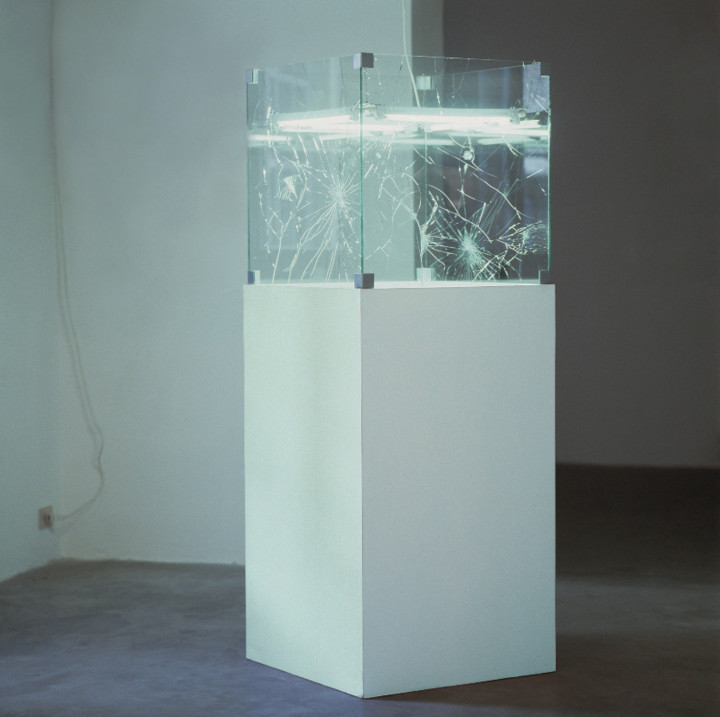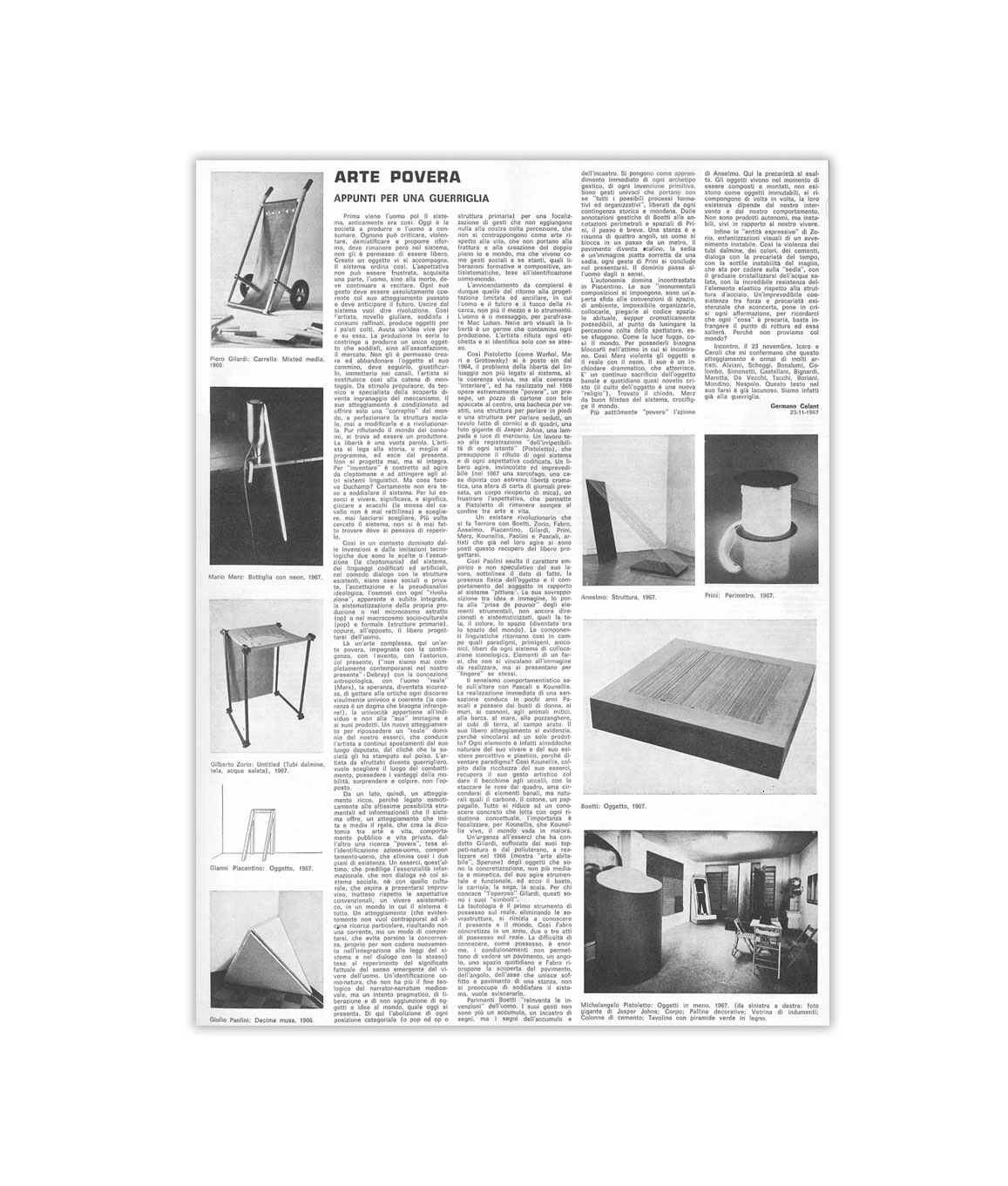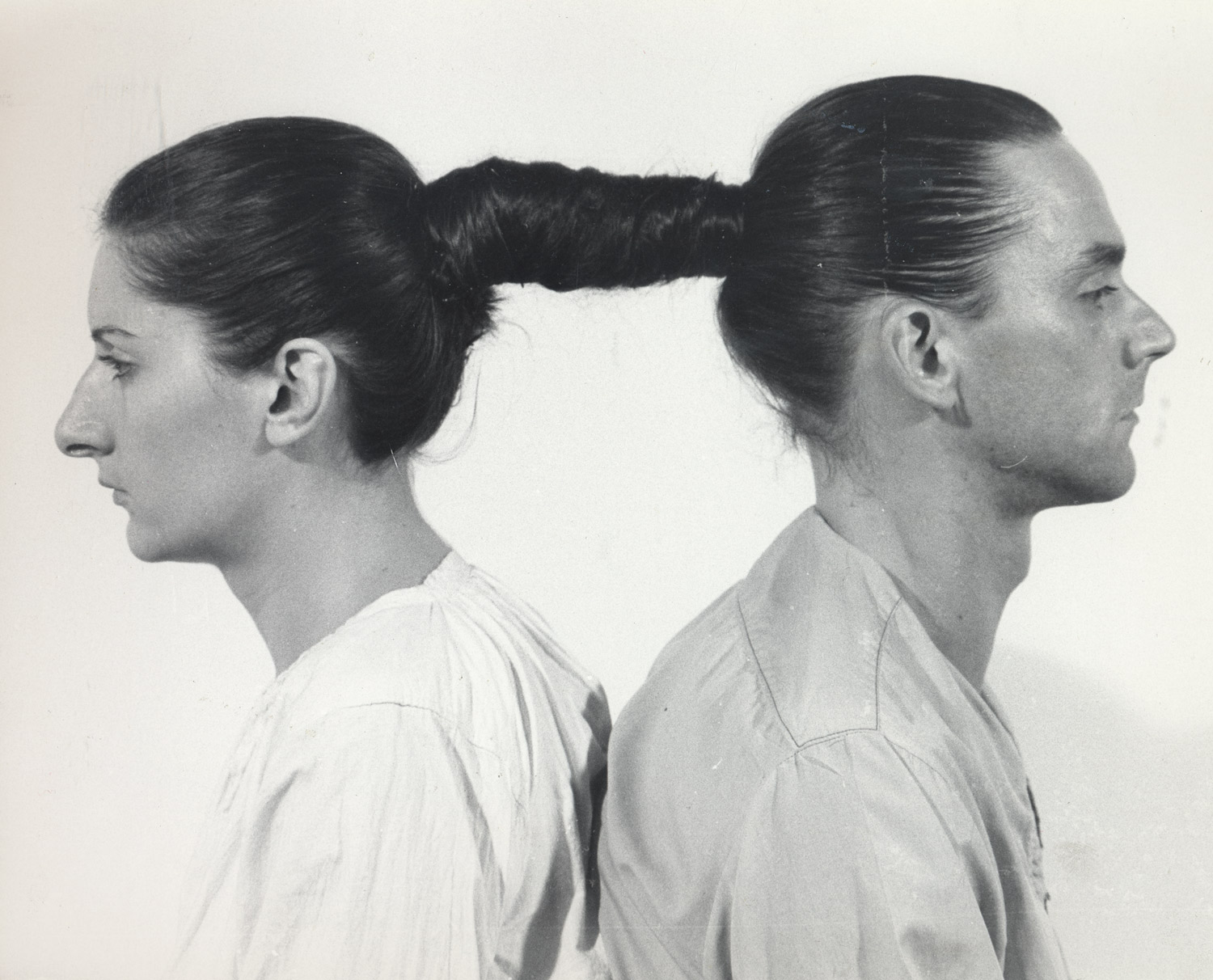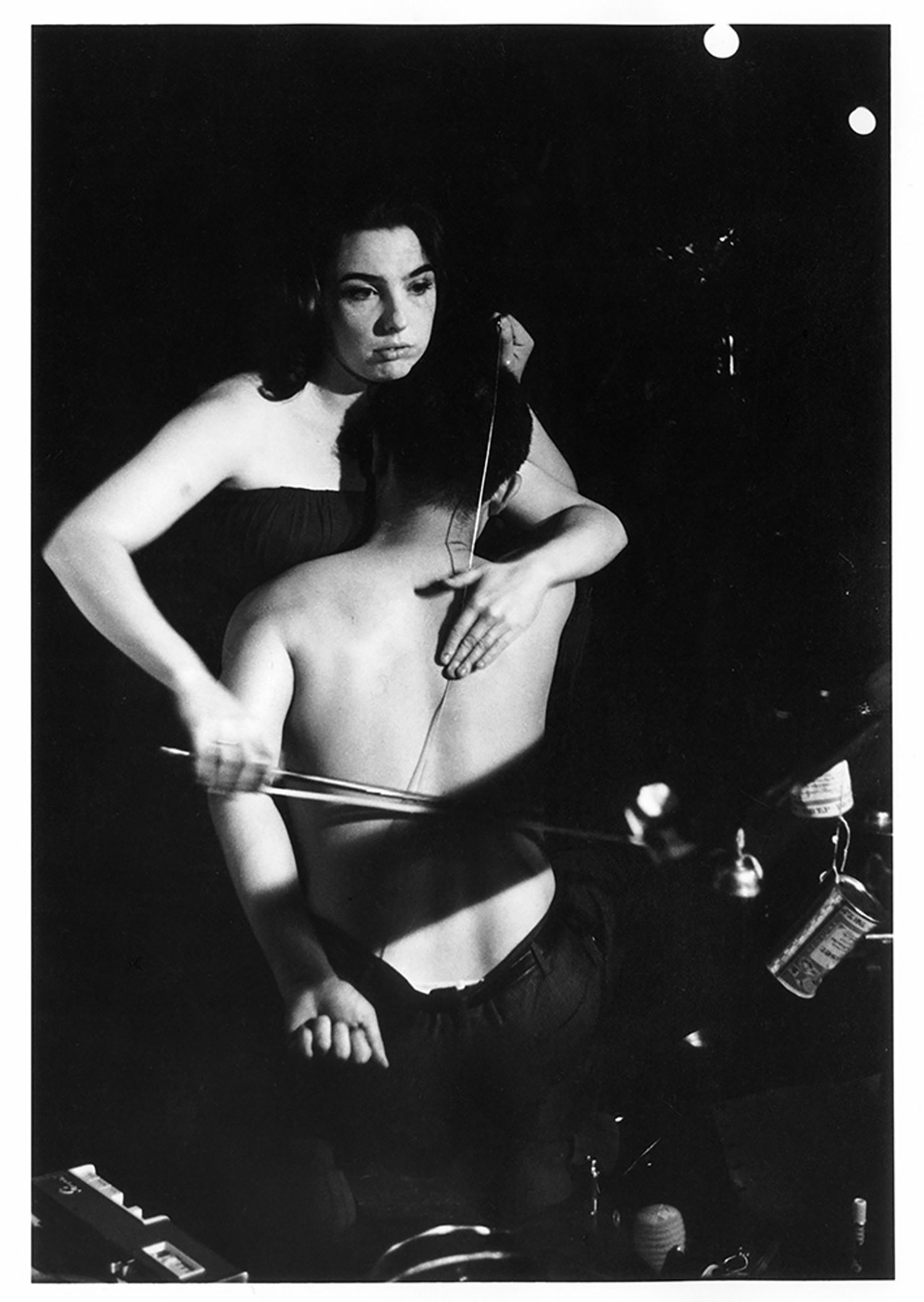
During the 8th Istanbul Biennial in 2003 artist collective Xurban exhibited what appears to be a minimalist, untreated, rusty metal object about twice as long as it is broad and high and segmented into three equally sized connected elements that take up the greater part of the exhibition space. In the rear of the gallery, photos and texts identify the metal object as a former diesel tank from the Turkish-Iraqi frontier. Before the Iraq war, such tanks were mounted underneath trucks to smuggle diesel fuel across the border as part of a parallel economy to the country’s official export policies, which were proscribed by world politics. The meaning of this ready-made object’s former use unfolds in the associations and memories of the informed viewer. The object was abandoned in a region characterized by the Kurdish minority and its conflicts with the governments in both neighboring countries.
In terms of world politics, Turkey is a bridgehead to the ideological and religious Other, i.e., the Islamic part of the world. NATO and the discussion of Turkey’s accession to the EU reflect this ambivalent role. Iraq, on the other hand, is not only the embodiment of what President Bush called ‘evil,’ but also represents one of the world’s largest supplies of oil. The presentation and displacement of the readymade make oil a theme: as exchange value and political issue, as an object of desire, and as an export and smuggling apparatus.
Now, in wartime, the diesel tanks on the Iraqi-Turkish border are merely senseless objects, abandoned in the landscape as toxic waste that can no longer be used — like destroyed armored vehicles after a battle. But they are the concrete embodiment of the complex situation in which they are found. The metal object, beautiful when viewed in purely aesthetic terms, cannot present itself in the gallery as the exclusively autonomous object of an art exhibition, but implies a before and an after, a history, a social and political perspective. Xurban’s work marks the crossing of a border. Not only the geopolitical borders of the logic of war and peace, nor the neostrategic borders of a newly enlarged concept of Europe and therefore the First World and the remaining legal, economical, ethnical, spiritual rest. The work also crosses the borders of the paradigmatic Frank Stella quote from 1966: “What you see is what you see.”
Nevertheless, recent years have seen artistic developments in image and form that, like those in the ’60s and ’70s, once again open up societal and political questions. Countries in what was once called the Third World and the crisis epicenters of the last 10 years, like Israel/Palestine and the Near East, the Balkans and New York, have not only experienced traumatic events, but have also brought forth or inspired artists who respond to and deal with these contemporary realities. Formally, many of these works are based on the expansion of artistic means of expression in the areas of performance art, conceptual art, and minimal art. But in addition to minimalism or post-minimalism, the focus is not on the absence of figurative depiction and the reduction or even abstraction of a basic geometric shape, but on the narrative conceptual foundation. This foundation covers a range of social and political considerations, from examinations of ecology or the body to societal/economical, ideological/political, or humanistic/ethical questions.
As the titles of the works, the contexts of their creation, and their materiality or technical formulation indicate, the narrative has become the ruling underlying structural guideline — not only of many art pieces, but also of many curated exhibitions. Replacing the word narrative with political, while perhaps making an illegitimate claim, simply states a responsibility and courage for consequences of images and stories in the media-driven societies of 2004. Notwithstanding that the expression ‘political minimalism’ initially sounds like an oxymoron, it should have enough short-term value for this very text. The tension of the obvious contradiction between the meanings of minimalism — the autonomy of the object on the one hand and the ideological and ethical quality of political, humanistic, and societal activity on the other — create a formal and substantive field of in-between space that current art production has adopted as its own.
The sculptures of Dan Graham, Hans Haacke and Felix Gonzalez-Torres should be mentioned as some of the godparents of this new generation of artists. Hans Haacke’s glass cube (Condensation Cube, 1963-65) containing a specific amount of water creates and reflects a microcosmic image of ecology as a system that on first glance seems closed. The effect of the fluctuating temperature is the evaporation and condensation of the water in the glass cube.
Dan Graham brings the human figure and social interaction back into his geometric sculptures, in that the mirroring surfaces reflect the forms of the viewers in myriad multifaceted and often shape-distorting ways, thus making viewers an integral part of the artworks.
Gonzalez-Torres’s precisely rectangular fields of bonbons wrapped in gold foil and his piles of posters anticipate many of political minimalism’s narrative and socially dedicated aspects. In his work Untitled (Placebo) (1991), the bonbons have exactly the same weight as his partner, who died of AIDS; that the sweets could be taken away expresses not only an artistic generosity but also alludes to the spread of the deadly HIV virus through ‘love.’
Kendell Geers, from South Africa, takes up Gonzalez-Torres’s form of work directly, but instead of the ‘sweet love’ of the bonbons, he has designed a floor sculpture in which a rectangle is clearly described by a great number of padlocks. South Africa not only has one of the highest rates of AIDS mortality in the world, but the history of Apartheid and homelands has made it a country of ethnic separation to this day. Even after the end of Apartheid, no policy of integration has yet succeeded, and the separations between rich and poor and between black and white continue. Material property and freedom from bodily injury have become vehemently threatened every day, which only radical security measures and locking away can protect. Geers’s security blanket creates a complex visual expression of this predicament.

Nebojsa Seric-Shoba, from Bosnia-Herzegovina, hangs milky translucent sheets of plastic from empty flagpoles in Sarajevo. The resulting flags [Under All Those Flags, 1999] are projection screens for the power struggles in the city, where the artist was a third-year student when the siege reached its climax.The Israeli artist and trained dancer Sigalit Landau shaped a hula-hoop and conducted a performance with it on the beach in Tel Aviv [Barbed Hula (from Cycle Spun, 2007), 2000]. Only on second glance did the viewer recognize that the performance object is a ring of barbed wire.
The artistic practice of the ’90s has often provided utopian concepts. The fusion of art and design — of architecture on the one hand and film, television, and popular culture on the other — have given rise to proposals that must now be examined for their relevance and virulence. At the same time, to this day many of the artists of that decade have often taken recourse in the formal language of early minimal art. Beginning with the influential position of the aforementioned Felix Gonzalez-Torres, basic geometric forms dominated in the sculpture of the ’90s, from Andrea Zittel’s living units to Francis Alÿs’s block of ice, which, as it is pushed through the city, dissolves by melting and leaving ephemeral (water) traces behind it. From Damien Hirst’s cubic formaldehyde vitrines holding dissected and segmented sheep or sharks to Teresa Margolles’s Burial (1999). From Jeppe Hein’s metal spheres, which slowly destroy the room they are exhibited in, to Monica Bonvicini’s broken, blocky, glass display case.
Bonvicini exhibited an empty glass case, about 50 x 50 x 50 cm in size, on a waist-high pedestal of similar dimensions, with a source of light integrated in the body of the glass. The panes of the showcase are shattered, but the form of the case, as a glass cube, is intact and undamaged. The viewer’s initial reflex is to seek the missing object, until he or she recognizes the damaged glass vitrine itself as the intended exhibit. The damage nearly becomes a filmic plot, making the viewer aware of the components of time and of the action that has been carried out; the viewer feels the aggressiveness for which the work has found an image.
Through their materiality, their origins, and often also their titles, the basic forms in political minimalism have gained a narrative dimension. Walter Benjamin writes that the most important aspect of a photo is often its caption. Today we can perhaps say this about the titles of the works of political minimalism. The presence of the human form, of history and stories — made visible with the aid of an almost abstract form — needs a pre- or a subtext to make it decodable, tempting the question of the obligatory autonomy of the art object once again. Art that stands between fiction and documentation has led in recent years to a prevalent interpretational multifacetedness. One of the reasons is that current artists work with the images that surround them, and these are media images — from advertising to war reporting, from lifestyle features to bulletins from disaster areas.
The unclear quality of this art — straddling fact and fiction, observation and assertion — reflects and heightens the dubious state of information in our media society. But even simple geometric forms have become symbols with political and ideological encodings. From the basic forms and minimalist aesthetics of protein bars and Prada cosmetics, even computers and digital cameras look like elements from the treasury of reductive forms. Translucent and pure white, Apple computers have waged a triumphant campaign for knowing customers. From iPods and iBooks to Nintendo’s GameCube for youngsters, the minimalist form now sets the tone and dominates elements of design and style. Austere, ornament-free modern architecture, whose materiality recalls Donald Judd’s sculptures, has long since become mainstream. Even at Ikea, one finds ornament-free furnishings for the mass market that ten years ago could be sold only to the happy few of the design and art elite. Monochromatic walls in ornament-free rooms, where one material blends into the other by means of shadow-joints, adorn hotel lobbies from New York’s former meatpacking district to Düsseldorf’s suburbs. These formerly elitist standards have long since become a mass value. Current art practice takes up this thread, lending the reduced basic geometric forms a new virulence.
Teresa Margolles’s aforementioned sculpture, for example, which at first glance looks like a clear concrete sculpture by Bruce Nauman, disconcerts us with its title: Burial. In fact, this concrete sculpture is a poured form containing the mortal remains of a premature baby. The body, which otherwise would have landed in the bio-trash of a hospital in Mexico City, has found a last resting-place and a memorial in Margolles’s sculpture. The sculpture and the fetus inside it, which travel from one exhibition in London to the next in Frankfurt, not only make us think about the elemental processes of life, but also — since it is imported from what was called the Third World into the big cities of the industrial nations — about the gap in the exchange values of human bodies. The trade in human organs and newborn babies for adoption in the First World is an immediate association.
In 2003, Santiago Sierra took as his theme the attempt to cross the border into the new, enlarged Europe. On the invitation of the NMAC Foundation, he realized a field of 1.5 x 2.5-meter rectangular holes in the ground precisely where illegal African refugees land in Europe. He hired these same refugees at a minimum wage to perform useless heavy labor in the scorching sun. The Foundation’s budget was just enough to dig a stringently ordered geometric field of 3000 negative cubes on the coast at the extreme edge of southern Europe. The aerial photograph reveals the monumental, minimalist Land Art sculpture as a freshly dug graveyard.
from Flash Art International no. 237, 2004.





